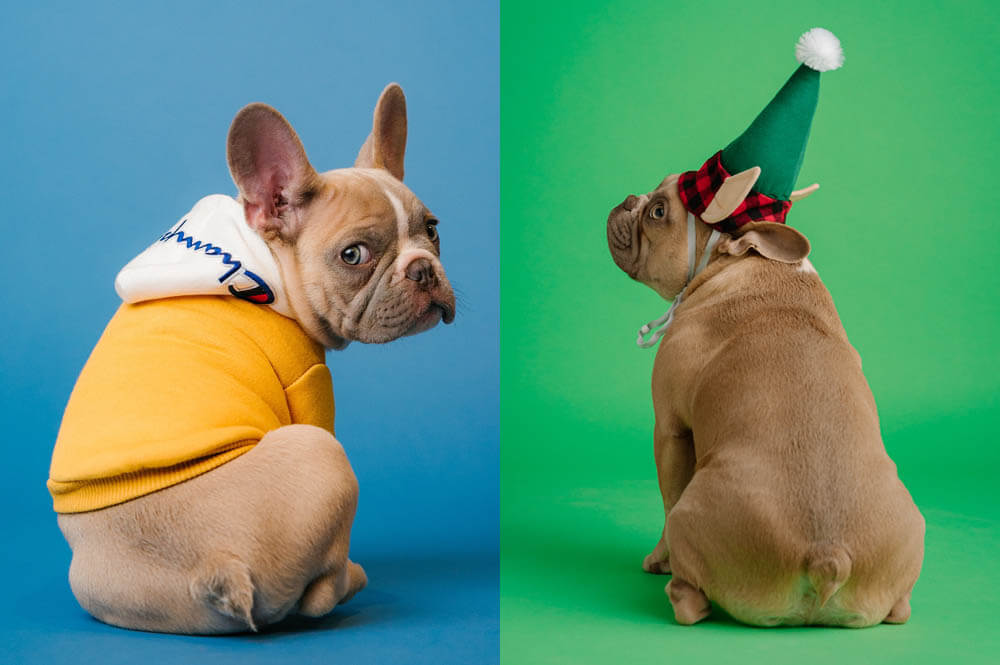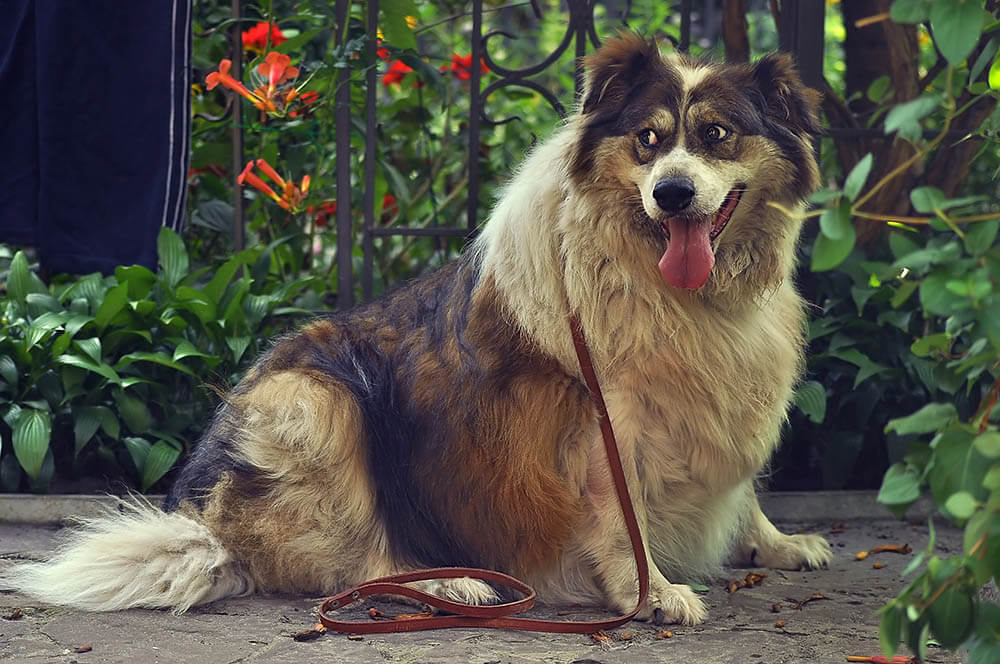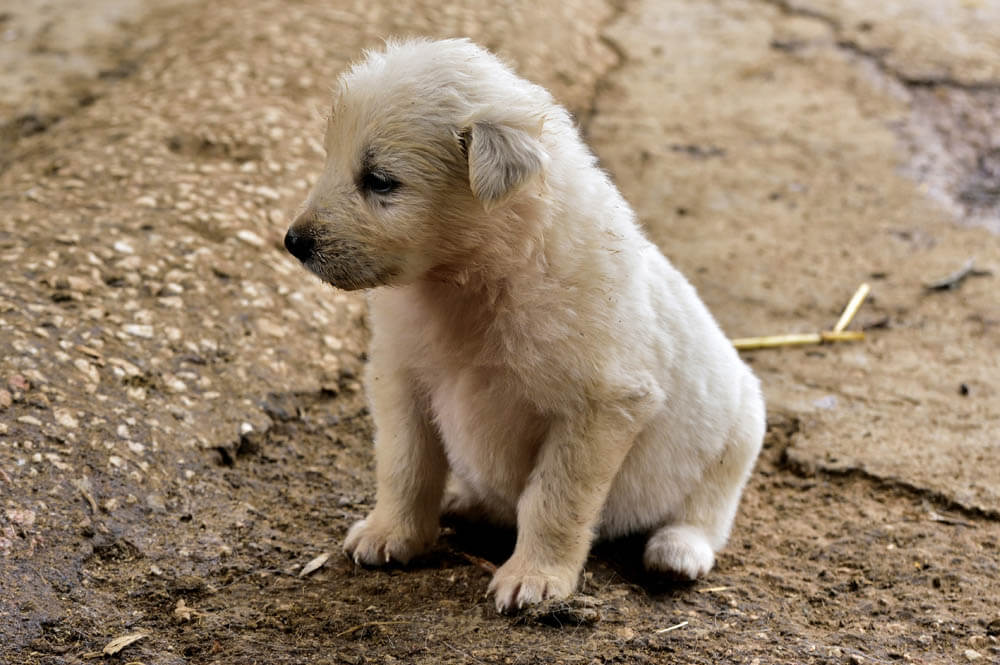Have you ever seen a dog plant their backside on the floor, raise both hind paws, then use their forepaws to drag their bottom across the ground? Also known as “scooting,” this behavior may be both surprising and hilarious the first time you witness it. However, it can be downright embarrassing if done in the presence of guests.
But what does it mean when a dog engages in such odd behavior? Is it a sign your dog’s just having fun at your expense? Or should you be worried?

8 Reasons Behind Scooting
A dog doesn’t drag their backside against the floor to annoy their owner. On the contrary, this behavior is a sign that something’s bothering them.
In most cases, the cause is perianal irritation—a fancy term for an itchy butt.
But what causes your dog’s butt to itch? And are there other reasons behind scooting?
Read on as we discuss the 8 reasons why a dog would drag their butt on the ground!
1. Anal sac problems
Dogs have a pair of oval anal sacs (a.k.a. anal glands), one on each side of the anus. When a canine defecates, these sacs get squeezed, causing them to secrete a fluid with a strong, one-of-a-kind odor. This substance is believed to serve as identification (similar to how fingerprints work for humans), which is why dogs like sticking their noses in each other’s butts—the smell tells a dog a lot about the dog they’re sniffing. This odor can also help a dog mark their territory.
It’s rare for dogs to experience problems with their anal sacs, but when they do, it can cause discomfort in the rear end, therefore encouraging scooting.
Below are the anal sac issues a dog can suffer from:
A. Infected anal sacs
Infection of the anal sacs can cause mild to significant irritation. As the infection worsens, the sacs can even grow painful. A dog drags their butt across the floor in an attempt to relieve this discomfort.
Other symptoms of infected anal sacs include:
- Constant licking of the anus
- Pus-filled or bloody discharge beside the anus
B. Impacted anal sacs
Each anal sac comes with a tiny duct out of which the foul-smelling secretion drains. Unfortunately, these ducts sometimes get clogged, and the consequential accumulation of fluid causes the sac to expand. This is called impaction—a condition that causes a dog great discomfort.
C. Anal gland cancer
An anal gland tumor can grow undetected until it obstructs the sac, preventing the secretion of fluid. The gland can then become impacted or infected.
Some dogs, such as Cocker Spaniels, are more likely to suffer from anal gland cancer than other breeds.
The solution:
If you suspect your dog has a problem with their anal sacs, don’t hesitate to take them to the vet. Medications can resolve these issues. In rare cases, the sacs can even be surgically removed.
If your dog is unable to squeeze their anal sacs themselves during defecation, have a vet or groomer do the squeezing for them. Ask them to teach you how it’s done so you can do this yourself at home.
2. Allergies
A dog that’s dragging their butt across the floor may be experiencing an allergic reaction to something they ate.
One of the most common symptoms of allergies is itchiness. If the food doesn’t agree with your dog, it can inflame the skin and mucus membrane around the anus, causing perianal irritation. Your dog scoots to “scratch” that itch!
Other potential allergens include fleas, pollen, mold spores, cigarette smoke, and medication.
If your dog is having an allergic reaction, they may also display the following symptoms:
- Hives
- Inflamed, reddish skin
- Facial swelling
- Vomiting
- Diarrhea
- Sneezing
- Constant licking
- Chronic ear infections
The solution:
Treating the allergy will relieve your dog’s itching.
Treatment is usually as easy as feeding your dog food lacking the allergen. Keep feeding them only this food for around 8 to 12 weeks so their system can be cleansed of all traces of the allergen.
It’s also a good idea to take your dog to the vet. Various medications exist capable of reducing allergy symptoms such as itching and skin inflammation.
You should also have the vet examine your dog to identify what they’re allergic to. This way, you can limit your dog’s exposure to allergens.

3. Parasites
Intestinal parasites are nasty little critters that can live in your dog’s gut to cause a variety of problems, including perianal irritation.
Tapeworms, for instance, make their home in the small intestine, then lay eggs that are transported to the anus to cause itching. Egg packets resemble tiny seeds; if you see these near your dog’s anus, it’s a clear sign they’re infested with tapeworms.
The other symptoms of intestinal parasites include:
- Vomiting
- Diarrhea
- Lethargy
- Swollen abdomen
- Nutritional deficiencies
In severe cases, a dog can even experience:
- Cough
- Pneumonia
- Intestinal obstruction
The solution:
Take your dog to the vet for deworming, which kills worms and prevents future infestations. This treatment has to be done regularly—around every 3 months or 4 times a year.
When eaten, vermin can pass worms to dogs. A flea infestation can also lead to a parasitic infestation. To prevent these issues, have an exterminator clear your home of pests.
4. Diarrhea
During defecation, firm stools passing through the anus squeeze the anal sacs, allowing them to empty of fluid. Unfortunately, loose stools or diarrhea can’t exert enough pressure on these sacs. This means that if your dog’s poop is consistently soft, there’s a chance their sacs can become impacted, resulting in discomfort.
The solution:
You should keep your dog’s bowel movements healthy. Give them the appropriate amount of fiber so that their stools aren’t too soft, ensuring the anal sacs receive enough pressure to make fluid secretion possible during defecation. A vet can help you determine how much fiber your dog should eat per week.
If your dog has diarrhea, feed them a bland diet for a couple of days until their feces grow firmer. You can even give them probiotics to improve their gut health. Take them to the vet if the diarrhea persists for more than a day.
5. Rectal prolapse
The rectum is the large intestine’s final portion. When the rectum protrudes through the anus, it can cause your dog great discomfort. This is called rectal prolapse.
Rectal prolapse has several causes, including severe diarrhea or straining during defecation due to constipation.
Examine your dog’s rear end; if there’s a cylindrical, elongated mass sticking out of their anus, it’s a clear indication they have rectal prolapse.
The solution:
Contact the vet immediately if you observe your dog has rectal prolapse. This condition is usually treated via surgery.
As dietary fiber can help produce stools that are neither too hard nor too soft, you can prevent rectal prolapse by providing your dog with a diet containing the appropriate amount of fiber. Consult a vet to determine how much fiber is good for your dog.
Stool softeners and a moist diet can also prevent constipation.

6. Dirty butt
Sometimes, when a dog takes a dump, a small piece of their poop latches onto the fur surrounding the anus. When this poop dries up, it can rub the skin to cause soreness or pull on the fur in a way that results in discomfort. In the worst of cases, the dried feces accumulate to cover the anus, making defecation difficult.
At any rate, a dog dragging their butt across the floor could be a dog trying to dislodge the dried feces sticking to the fur around their anus.
The solution:
The solution is simple yet gross: you’ll have to remove the dried poop yourself. This means checking your dog’s butt daily and using moist tissue to remove any dried poop stuck to the fur.
You or a professional groomer can also trim the fur around your dog’s rear end. Keeping the hair short significantly reduces the risk of feces getting stuck on it.
7. Behavioral problems
How did you react the last time your dog dragged their butt across the floor? Did you laugh at them, speak to them in a soothing voice, or give them a pat on the head? If so, you could have unintentionally taught your dog that scooting is a behavior that can get them rewarded with positive attention.
Positive reinforcement is an effective way to train dogs. This is why we should be extremely careful about our actions lest we inadvertently convince our dogs that we enjoy their butt-scooting.
The solution:
The next time your dog drags their butt across the floor, refrain from reacting positively. You should ignore them, instead.
You can also use “positive punishment,” which is the use of an unpleasant stimulus that discourages a dog from repeating a behavior. For example, the moment you catch your dog scooting, you can blow an air horn, shake a soda can full of pennies, or utter a loud “No!” to startle them. Remember: you should perform the punishment during the act (preferably just as it’s starting), never afterward.
Punishing a dog after the deed will only confuse them and make them anxious. It’s also important never to physically hurt your pet, as this can also lead to mental health issues.
Consider asking a veterinary behaviorist or dog trainer to help your dog unlearn undesirable behaviors.
8. Genital issues
Problems with the genitals, such as urinary tract infection, can cause said genitals to itch, which may then provoke scooting as your dog tries to relieve their discomfort. Due to the proximity of the female dog’s private parts to her anus, you’re more likely to observe this type of scooting among female canines.
The solution:
Examine your dog for vaginal discharge, vulval fold infections, and knotted fur around the genitals, which can all cause discomfort and encourage scooting. Better yet, take them to the vet for an examination.

Conclusion
Don’t judge a dog too harshly for scooting! Our canine friends don’t drag their butts across the floor for no reason; the behavior is often an indication they’re experiencing some kind of discomfort. One dog may have an itchy butt due to allergies, parasites, or anal sac issues. Another could be suffering from a rectal prolapse. Yet another could have been unintentionally convinced by their owner that scooting is acceptable behavior.
Whatever the case may be, examine your dog’s rear end the moment they start scooting. This can help you determine what’s wrong with your dog and therefore find a way to give them some relief. Don’t forget to seek veterinary aid and take them to the pet clinic or hospital when necessary!
